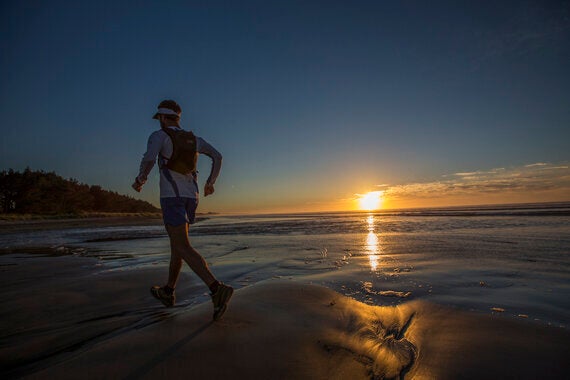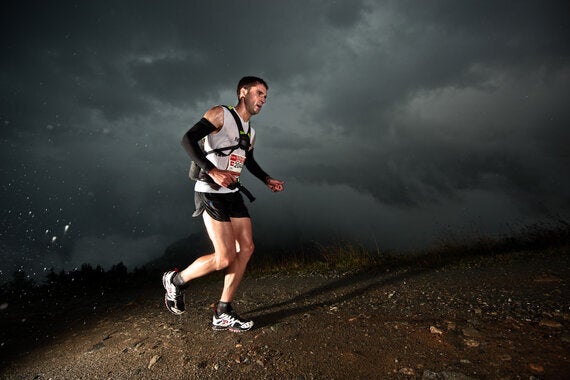Ever noticed that footpath marked by a green sign at the end of your street and wondered where it goes? In the UK you really don't have to venture far at all to find a public footpath or bridleway, or in other words a 'trail'. As a runner it's a gateway to an exciting new world of opportunity and adventure offering something a little different to your regular jogs around the block. Footpaths are not just for walkers....

Firstly I need to confess that I am a rather keen trail runner so completely biased, although I do dabble in a little in road running, mainly because I know it will help my speed and endurance on the trails. The two disciplines support each other remarkably well; road runners have a huge amount to gain from regular sessions on the trails.
My journey into 'trail running' started from an enjoyment of long distance walks, which then merged with a new found running fitness through a 'one off' charity marathon. The two led me into ultra distance trail running which has since become a real passion. Off road running road really does combine the best of both worlds and I now spend a lot of time trying to encourage other runners to venture on to the trails to enjoy it for themselves, although somehow there always seems to be a significant barrier there preventing runners from doing so more readily.
So why don't more runners embrace the trails? I suspect many find that a psychological barrier exists between the two, particularly when you are just starting out. Perhaps a seemingly innocuous footpath stile creates a mental barrier as well as a physical one, for runners as well as livestock. When plastered in mud, maybe there's not much difference?
Ultimately it boils down to the fact us runners are creatures of habit, kept on the straight and narrow by routine and training patterns, so the additional variables introduced by off road running no doubt creates some apprehension. GPS watches must have a part to play too; those average pace splits become so important on performance tracking apps. But really, is that all that matters? Surely we are looking for an experience each time we head out the door?

Even taking all this into account, I fail to see why you wouldn't want to use your running training as an opportunity to explore an area, whether it's local to your home or further afield. The UK is blessed with one of the most comprehensive networks of public footpaths anywhere in the world, and some stunning countryside. It certainly has to be the most accessible because, unlike many other countries, you can usually link into it from the end of your street. The 'right to roam' in England and Wales has also been greatly enhanced by The Countryside and Rights of Way Act 2000 opening up over three million acres of open access land. In Scotland your options are almost endless.
So what are the other benefits of trail running? Certainly the terrain itself provides a different style of training; uphill and downhill running will work different muscle groups in your legs and create a natural interval type workout. Uneven ground will improve your balance, control and core running strength. You will find your recovery is better, particularly on longer runs, because the physical stride impact is significantly less on softer ground. Working different muscle groups will help you to run longer, and enjoyable surroundings will take your mind off any discomfort to allow the miles to tick on by.

The trick to a successful run on the trails is a little pre-planning. Ideally get yourself a copy of your local ordnance survey map and plot a route to follow. It's always safest to run an out-and-back to start with, to significantly reduce the likelihood of going astray. Noting features along the way and at track junctions will greatly assist! Also think about footwear. A deeper lugged shoe will give you more grip when it's wet or muddy, but many runners will just use their road shoes and just accept they'll come back a little muddier than usual. Don't worry; they will clean themselves on your next run through long wet grass.
We are now coming to my favourite time of year for trail running. The cooler temperatures are far more pleasant for running, and the countryside colours are enhanced as the leaves start to turn. You can have a great adventure away from the crowds, get a little muddy and cold, then enjoy a long soak in a hot bath afterwards. Why not give it a go?
Jez Bragg is a The North Face global athlete.